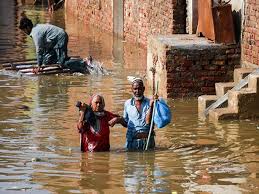Punjab Floods 2023: Understanding the Crisis and Response

Introduction
In September 2023, the Punjab region of India has faced devastating floods due to unprecedented rainfall and the overflow from rivers, resulting in a significant humanitarian crisis. The floods have not only affected millions of homes, but have also disrupted essential services, agricultural activities, and local economies. Understanding the scope of this disaster and its consequences is vital for residents, policymakers, and humanitarian organizations working to respond to the needs of affected communities.
Extent of the Damage
As of late September, reports indicate that over 500,000 residents have been displaced due to the flooding, with villages submerged and vital infrastructure, including roads and bridges, severely compromised. In several districts, like Ferozepur and Jalandhar, rainfall levels exceeded 300 mm within a short period, overwhelming drainage systems. Agricultural losses are estimated in the billions, with crops like rice and sugarcane severely damaged, threatening food security and livelihoods for many families.
Emergency Response Efforts
In response to the floods, the Punjab government has mobilized emergency teams to provide immediate relief. This includes distribution of food, clean water, and medical supplies to those affected. The National Disaster Response Force (NDRF) has been actively rescuing individuals trapped by the waters and assisting with evacuations. Additionally, NGOs and local community volunteers have rallied to support recovery efforts, setting up camps and providing psychological support to displaced families.
Community Resilience and Future Steps
In the aftermath of the floods, communities are beginning to assess the long-term impacts and their path to recovery. Local leaders are calling for improved flood management systems, including better drainage infrastructure, afforestation to reduce soil erosion, and more effective early warning systems. Experts emphasize the need for collaboration between government, NGOs, and local populations to build resilience against future flooding events.
Conclusion
The 2023 Punjab floods highlight the urgent need for enhanced disaster preparedness and response strategies to mitigate the effects of increasingly severe weather patterns. As recovery efforts continue, it is crucial for national and local authorities to prioritize resilience building against climate change impacts. The situation remains fluid, and ongoing support from the government and global organizations will play a pivotal role in the region’s recovery and the welfare of its people.


